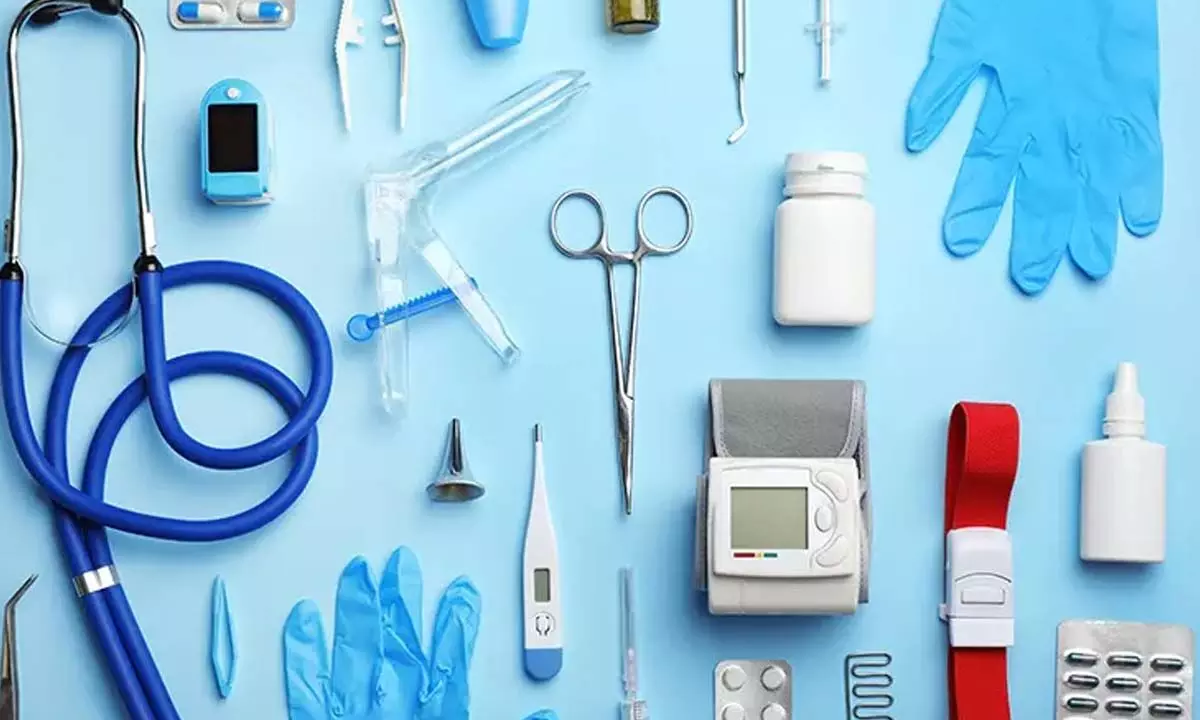New scheme will strengthen domestic manufacture of medical devices
Centre determined to lower over-dependence on imports
image for illustrative purpose

Though the country has, over the years, adorned the epithet of 'the pharmacy of the world' because of the volume of its exports of life-saving medicines all over, including developed nations like the US, UK and European Union, India has been critically dependent on imports for medical devices. At present, nearly 80 per cent of the medical devices sold in the country are imported, particularly the high-end medical devices.
The domestic medical devices companies have so far typically focused on low-cost and low-tech products, like consumables and disposables, leading to a higher value share going to foreign companies. Now, the central government is focused on reducing the import dependence from the present 80 per cent to nearly 30 per cent in the next 10 years, and become one of the top five global manufacturing hubs for medical devices by 2047.
In such a situation, the launch of ‘Assistance to Medical Device Clusters for Common Facilities’, with a proposed financial outlay of Rs. 300 crore, will go a long way in strengthening the existing units and see new medical device clusters with common infrastructure facilities. To expedite the scheme, the Department of Pharmaceuticals (DoP) has recently come out with guidelines for the scheme which, with two sub-schemes, is expected to help in boosting domestic manufacturing capacity and improving the quality of clusters for sustainable growth of the medical devices sector.
The DoP will provide financial assistance for creation of common facilities to medical device clusters and assistance for setting up testing facilities to the institutes under the scheme, which helps in the creation of tangible assets as common facility centers (CFCs). The scheme intends to support central or state governments, institutions or organisations to establish or strengthen the testing laboratories for medical devices to meet the needs arising out of the roll out of the licensing regime of the Medical Devices Rules (MDR), 2017.
The Scheme has two components or sub schemes --Assistance for Common Facilities (CF) and Assistance for Testing Facilities (TF) -- and would be running for three years up to 2025-26 with the scheme’s tenure being up to the financial year 2026-27. Both the sub-schemes are designed to set up 12 common facilities and 12 testing laboratories, under which the common facilities will be supported with a financial assistance of Rs. 240 crore (Rs. 48 crore in the first year, Rs. 128 crore in the second and Rs 64 crore in the third year) for the common facilities and Rs. 60 crore (Rs. 18 crore for the first, Rs. 30 crore for the second and Rs. 12 crore for the third year) for the testing facilities.
The government has, indeed, taken the right step as it is important to strengthen existing manufacturing clusters that are traditionally there through common facilities, while medical devices parks have planned clusters with shared common infrastructure. Creation of common infrastructure facilities is in line with the 4th Strategic Component of Building Infrastructure as defined in the recently announced National Medical Devices Policy (NMDP) 2023.
Niti Aayog and the DoP had listed a few factors that were leading to a 10-15% disability factor to be globally competitive and one of these was lack of adequate infrastructure. While medical devices parks have planned clusters with shared common manufacturing and testing or warehousing and clearing facilities were being encouraged to help reduce the capital expenditure of manufacturers, it is also equally important to strengthen the existing manufacturing natural clusters that existed in different parts of the country. The new scheme will be crucial for building on the existing skills and knowledge pool. This will also make the manufacturing units located in the existing clusters more competitive by allowing expansion with minimal capital expenditure by sharing capital expenditure of new facilities that are commonly used but not giving any manufacturer any technical strategic advantage. It is important that manufacturing units are not uprooted from the existing natural clusters and migrated to planned clusters coming up in medical devices parks to remain competitive.
(The author is freelance journalist with varied experience in different fields)

